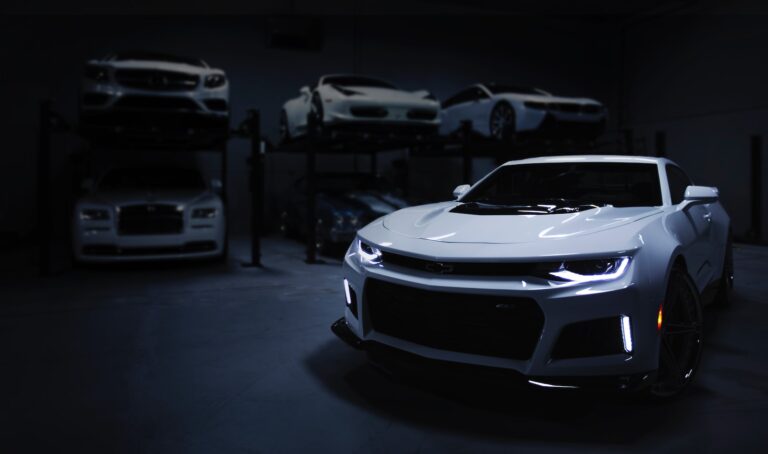Support our educational content for free when you purchase through links on our site. Learn more
🌎 Top 10 Largest Automobile Manufacturer Countries in the World (2025)
Buckle up! Ever wondered which country truly dominates the global car-making race? Spoiler alert: it’s not who you might expect. From China’s jaw-dropping production numbers to Italy’s luxury legends, this article takes you on a turbocharged tour of the world’s automotive giants. We’ll reveal surprising shifts in rankings, explore how electric vehicles are reshaping the landscape, and uncover what makes these countries the true kings of car manufacturing. Ready to find out who really rules the roads in 2025? Keep reading — the answer might just rev your engine!
Key Takeaways
- China leads by a landslide, producing over 31 million vehicles in 2024 and spearheading the electric vehicle revolution.
- The United States, Japan, and Germany remain influential, blending legacy, innovation, and luxury.
- Emerging markets like India and Mexico are accelerating fast, reshaping the future of car manufacturing.
- The global auto industry is rapidly shifting towards sustainability and green technologies, with EVs at the forefront.
- Understanding the balance between domestic and foreign automakers is key to grasping production figures.
👉 Shop top brands from leading countries:
- 👉 Shop Toyota (Japan): Edmunds | TrueCar | Toyota Global
- 👉 Shop Volkswagen (Germany): Auto Trader | Edmunds | Volkswagen Official
- 👉 Shop Hyundai (South Korea): TrueCar | Edmunds | Hyundai Official
Table of Contents
- ⚡️ Quick Tips and Facts About the Largest Automobile Manufacturer Country
- 🌍 Automotive Powerhouses: A Historical Overview of Global Car Manufacturing
- 🚗 Top 10 Largest Automobile Manufacturer Countries in the World
- 1. China: The Unstoppable Auto Giant
- 2. United States: The Legacy of American Muscle and Innovation
- 3. Japan: Precision Engineering and Technological Mastery
- 4. Germany: The Heart of European Automotive Excellence
- 5. South Korea: Rising Star in the Global Auto Market
- 6. India: Emerging Market with Massive Growth Potential
- 7. Mexico: The Manufacturing Hub for North America
- 8. Brazil: South America’s Automotive Leader
- 9. France: Innovation and Style in European Cars
- 10. Italy: Home of Luxury and Performance
- 🔍 What Makes a Country the Largest Automobile Manufacturer? Key Metrics Explained
- ⚙️ The Role of Domestic vs. Foreign Automakers in Manufacturing Output
- 🌱 Sustainability and Green Manufacturing Trends in Leading Auto Countries
- 📈 Economic Impact: How Auto Manufacturing Shapes National Economies
- 🚀 Future Outlook: Emerging Markets and Technologies Shaping Auto Manufacturing
- 🛠️ Challenges Faced by the Largest Automobile Manufacturer Countries
- 💡 Interesting Anecdotes and Surprising Facts About Global Auto Manufacturing
- 🔗 Recommended Links for Deeper Insights on Global Car Manufacturing
- ❓ Frequently Asked Questions About the Largest Automobile Manufacturer Countries
- 📚 Reference Links and Data Sources
- 🏁 Conclusion: Who Really Rules the Roads?
Ever wondered which nation truly wears the crown in the automotive world? 👑 At Car Brands™, we live and breathe everything with four wheels, and this question gets our engines revving! It’s a global race with titans of industry, legacy automakers, and rising stars all vying for the top spot. We’re about to take you on a joyride through the world of car manufacturing, exploring not just who makes the most cars, but how they do it and what it means for you, the driver. For a comprehensive look at the major players, check out our article on The Ultimate Car Manufacturers List: 25 Giants & Innovators (2025) 🚗.
⚡️ Quick Tips and Facts About the Largest Automobile Manufacturer Country
Before we dive deep, here are some quick-fire facts to get you up to speed:
- China is the undisputed champion of car production. In 2024, China produced a staggering 31.28 million vehicles. This continues their 16-year reign as the world’s top auto producer.
- The United States holds a strong second place, with a production of over 10.5 million vehicles in 2024.
- Global motor vehicle production saw a slight dip in 2024, with a total output of 92.5 million units, a 1% decrease from the previous year.
- The term “motor vehicle” is broad and includes everything from passenger cars and light commercial vehicles to buses and coaches.
- The International Organization of Motor Vehicle Manufacturers (OICA) is a key source for global production data, representing the interests of vehicle manufacturers worldwide.
🌍 Automotive Powerhouses: A Historical Overview of Global Car Manufacturing
The story of car manufacturing is a fascinating saga of innovation, economic shifts, and national pride. It all started in the late 19th century, but it was the United States that first truly mastered mass production in the early 20th century, holding the title of the world’s largest automobile producer for decades. In 1950, the U.S. accounted for over 80% of global car production. Can you imagine that kind of dominance?
However, the tides began to turn in the latter half of the century. Japan, with its focus on efficiency and quality, rose to prominence and overtook the U.S. in the 1980s. This shift sent shockwaves through the industry and you can learn more about the fascinating journeys of these automotive giants in our Car Brand Histories section.
Then, in 2009, a new king was crowned: China. Its meteoric rise has been nothing short of spectacular, driven by a massive domestic market and significant government investment. This constant evolution is what makes the auto industry so exciting to follow, and we keep a close eye on all the latest developments in our Auto Industry News.
🚗 Top 10 Largest Automobile Manufacturer Countries in the World
So, who are the current heavyweights in the global automotive ring? Let’s count them down!
1. China: The Unstoppable Auto Giant
It’s hard to overstate China’s dominance in the automotive world. For 16 consecutive years, it has held the top spot in both production and sales. In 2024, the country manufactured an incredible 31.28 million vehicles. To put that in perspective, that’s more than the next few countries on this list combined!
What’s the secret to their success? A combination of a massive domestic market, government support for the industry, and a rapidly growing electric vehicle (EV) sector. In fact, China is not only the largest producer of cars but also the largest market for them. The “Big Four” domestic manufacturers—SAIC Motor, Dongfeng, FAW, and Changan—are major players, alongside a significant presence of international brands manufacturing within the country.
- ✅ **Massive production volume and a huge domestic market.**
- ✅ **Leading the charge in electric vehicle manufacturing.**
- ❌ **Domestic brands are still building their reputation on the global stage.**
2. United States: The Legacy of American Muscle and Innovation
The birthplace of the modern automobile, the United States remains a formidable force in the industry. In 2024, it produced over 10.5 million vehicles. The “Big Three”—General Motors, Ford, and Stellantis—continue to be major contributors, known for their iconic trucks and SUVs. The U.S. is particularly strong in the production of commercial vehicles.
While it may no longer be the top producer by volume, the U.S. is a leader in automotive innovation, especially with companies like Tesla driving the electric vehicle revolution. The American automotive industry also has a significant economic impact, providing millions of jobs.
- ✅ **Strong legacy of innovation and powerful brands.**
- ✅ **Dominant in the lucrative truck and SUV market.**
- ❌ **Facing increasing competition from international manufacturers.**
3. Japan: Precision Engineering and Technological Mastery
When you think of Japanese cars, you think of quality, reliability, and efficiency. Japan’s automotive industry is built on a foundation of meticulous engineering and continuous improvement. In 2024, Japan produced over 8.2 million vehicles. Brands like Toyota, Honda, and Nissan are household names around the world, renowned for their dependable and fuel-efficient vehicles.
Japan has also been a pioneer in hybrid technology, with the Toyota Prius being a global icon. However, the industry has faced some challenges recently, including a decline in production in 2024 due to various factors. Despite this, Japan remains a global leader in automotive technology and exports.
- ✅ **Renowned for quality, reliability, and fuel efficiency.**
- ✅ **A leader in hybrid vehicle technology.**
- ❌ **Facing challenges from a saturated domestic market and recent production declines.**
4. Germany: The Heart of European Automotive Excellence
Germany is synonymous with premium and performance vehicles. With a production of around 4.1 million vehicles in 2024, it is the automotive powerhouse of Europe. German engineering is legendary, and brands like Volkswagen, BMW, and Mercedes-Benz set the standard for luxury and performance worldwide.
The German auto industry is a major contributor to the country’s economy and is at the forefront of automotive research and development. While production in 2024 remained relatively flat compared to the previous year, the country is making significant strides in electric vehicle production.
- ✅ **Home to some of the world’s most prestigious car brands.**
- ✅ **A leader in automotive engineering and technology.**
- ❌ **Production levels have not yet returned to pre-pandemic highs.**
5. South Korea: Rising Star in the Global Auto Market
South Korea’s automotive industry has had a remarkable journey, transforming from an assembler of foreign parts to a global leader in its own right. In 2024, the country produced over 4.1 million vehicles. The Hyundai Motor Group, which includes Hyundai and Kia, has become a major force in the global market, known for its stylish designs, advanced technology, and competitive warranties.
However, South Korea’s domestic production has seen a decline in recent years as its automakers have expanded their manufacturing footprint overseas. The country slipped to seventh in global production rankings in 2024, facing challenges from a weak domestic market and increasing global competition.
- ✅ **Rapidly growing brands with a reputation for style and value.**
- ✅ **Strong focus on technology and design.**
- ❌ **Declining domestic production and increasing overseas manufacturing.**
6. India: Emerging Market with Massive Growth Potential
India’s automotive industry is on a fast track, with production surpassing 6 million units for the first time in 2024. The country has become a significant player in the global automotive landscape, driven by a burgeoning domestic market and increasing exports. The “Make in India” initiative has given a major boost to domestic car production.
India is the world’s largest manufacturer of three-wheelers and a top producer of two-wheelers and passenger vehicles. Domestic giants like Tata Motors and Maruti Suzuki dominate the market, alongside a growing number of international players. The Indian government is also actively promoting the adoption of electric vehicles.
- ✅ **Rapidly growing domestic market and production.**
- ✅ **A major hub for small car and two-wheeler manufacturing.**
- ❌ **Infrastructure and regulatory challenges still exist.**
7. Mexico: The Manufacturing Hub for North America
Mexico has solidified its position as a key automotive manufacturing hub, particularly for the North American market. In 2024, the country’s auto production reached a record-breaking 4.2 million units, surpassing Germany and South Korea to rank fifth globally. This impressive growth is fueled by its strategic location, skilled workforce, and trade agreements like the USMCA.
A significant portion of Mexico’s production is exported, with the United States being the primary destination. Many of the world’s leading automakers have established manufacturing plants in Mexico, taking advantage of its competitive advantages. The country is also seeing a rise in the production of electric vehicles.
- ✅ **Strategic location and strong integration into the North American supply chain.**
- ✅ **Record-breaking production and export numbers.**
- ❌ **Heavily reliant on the U.S. market and subject to trade policy fluctuations.**
8. Brazil: South America’s Automotive Leader
As the largest economy in South America, Brazil is also the continent’s leading automobile manufacturer. The country has a long history of car production, with many international automakers operating plants there. While facing economic headwinds at times, the Brazilian auto market has shown resilience and growth potential.
The majority of vehicles produced in Brazil are sold domestically, catering to the needs of its large population. The government has also implemented policies to encourage the production of more fuel-efficient and environmentally friendly vehicles.
- ✅ **Largest automotive market and producer in South America.**
- ✅ **Strong presence of major international automakers.**
- ❌ **Economic volatility can impact production and sales.**
9. France: Innovation and Style in European Cars
France has a rich automotive heritage, known for its distinctive designs and innovative engineering. French automakers like Renault, Peugeot, and Citroën (part of Stellantis) have a strong presence in Europe and other parts of the world. The French auto industry is a key part of the country’s economy and a leader in the development of electric vehicles and sustainable mobility solutions.
While not on the same scale as some of the other countries on this list in terms of production volume, France’s influence on car design and technology is undeniable. For those interested in how these brands stack up against each other, our Car Brand Comparisons offer in-depth analysis.
- ✅ **Strong emphasis on design, comfort, and innovation.**
- ✅ **A leader in the European electric vehicle market.**
- ❌ **Production volumes are smaller compared to the top-tier manufacturing countries.**
10. Italy: Home of Luxury and Performance
When it comes to high-performance and luxury sports cars, Italy is in a league of its own. Home to legendary brands like Ferrari, Lamborghini, and Maserati, Italy has a long and storied history of producing some of the most desirable cars in the world. While its overall production numbers are not as high as other countries on this list, its impact on the automotive world is immense.
The Italian auto industry is also home to Fiat, a major player in the small car segment and part of the Stellantis group. The focus in Italy is often on craftsmanship, design, and performance, creating cars that are as much works of art as they are modes of transportation.
- ✅ **The undisputed leader in luxury and high-performance sports cars.**
- ✅ **A rich heritage of automotive design and craftsmanship.**
- ❌ **Lower overall production volume compared to mass-market manufacturers.**
🔍 What Makes a Country the Largest Automobile Manufacturer? Key Metrics Explained
So, what exactly are we counting when we talk about the “largest automobile manufacturer country”? The primary metric used is the total number of motor vehicles produced in a given year. This data is compiled by organizations like the International Organization of Motor Vehicle Manufacturers (OICA) and includes a wide range of vehicles:
- Passenger Cars: This is what most of us think of when we hear the word “car.”
- Light Commercial Vehicles: This category includes pickup trucks, vans, and minibuses.
- Heavy Trucks: These are the big rigs you see on the highway, used for long-haul transportation.
- Buses and Coaches: Vehicles designed for public transportation and tourism.
It’s important to remember that these figures represent the total volume of vehicles manufactured within a country’s borders, regardless of the brand’s origin. This brings us to another interesting aspect of global auto manufacturing…
⚙️ The Role of Domestic vs. Foreign Automakers in Manufacturing Output
One of the fascinating things about the global auto industry is the interplay between domestic and foreign automakers. A country’s total production numbers are a mix of vehicles produced by its own homegrown brands and those produced by international companies that have set up manufacturing plants within its borders. For a deeper dive into how these brands perform in the market, check out our Car Brand Market Shares analysis.
For example, a significant portion of the vehicles produced in the United States are from Japanese and German brands like Toyota and BMW. Similarly, many international automakers have large manufacturing operations in China to cater to the massive local market. This globalization of the auto industry has led to a complex and interconnected supply chain, where parts and components can cross multiple borders before a vehicle is fully assembled.
🌱 Sustainability and Green Manufacturing Trends in Leading Auto Countries
The automotive industry is undergoing a massive transformation, with a global push towards sustainability and green manufacturing. This is especially evident in the leading auto-producing countries, which are all racing to become leaders in the electric vehicle (EV) market.
China is currently leading the charge, with a huge domestic market for EVs and significant government support for the industry. Europe is also making a strong push, with countries like Germany and France investing heavily in EV production and infrastructure. In the United States, companies like Tesla have been instrumental in popularizing EVs, and traditional automakers are now following suit with their own electric models.
This shift towards green manufacturing is not just about the vehicles themselves. Automakers are also looking for ways to make their production processes more sustainable, by reducing waste, using renewable energy, and sourcing materials responsibly. We cover these exciting developments in our Auto Industry News section.
📈 Economic Impact: How Auto Manufacturing Shapes National Economies
The automotive industry is a major engine of economic growth for many countries. It creates millions of jobs, not just in manufacturing but also in related sectors like research and development, sales, and after-sales services. The industry also drives innovation and technological advancement, with automakers constantly pushing the boundaries of what’s possible in terms of performance, safety, and efficiency.
In countries like Germany and Japan, the auto industry is a cornerstone of the national economy, accounting for a significant portion of their GDP and exports. In emerging economies like India and Mexico, the growth of the auto industry is helping to drive economic development and create new opportunities for their citizens.
🚀 Future Outlook: Emerging Markets and Technologies Shaping Auto Manufacturing
So, what does the future hold for global auto manufacturing? While the current leaders are likely to remain major players for the foreseeable future, we can expect to see some interesting shifts in the coming years. Emerging markets like India and Southeast Asian nations are poised for significant growth, with their large populations and rising disposable incomes.
In terms of technology, the shift towards electric and autonomous vehicles will continue to accelerate. This will create new opportunities for both established automakers and new players in the market. We’re also likely to see further advancements in manufacturing technology, with increased use of robotics, artificial intelligence, and data analytics to improve efficiency and quality.
One thing is for sure: the global race for automotive supremacy is far from over. It will be fascinating to see which countries and companies come out on top in the years to come!
🛠️ Challenges Faced by the Largest Automobile Manufacturer Countries
Despite their impressive production numbers, the leading automobile manufacturing countries are not without their challenges. Here are some of the key hurdles they face:
- Supply Chain Disruptions: The COVID-19 pandemic highlighted the vulnerability of the global automotive supply chain. Shortages of key components, such as semiconductors, have caused major production delays for automakers around the world.
- Geopolitical Tensions: Trade disputes and political instability can have a significant impact on the auto industry. Tariffs and other trade barriers can increase costs and disrupt the flow of vehicles and parts between countries.
- The Transition to Electric Vehicles: While the shift to EVs presents a huge opportunity, it also poses a significant challenge. Automakers need to invest heavily in new technologies and retool their factories, while also dealing with issues like battery supply and charging infrastructure.
- Increasing Competition: The automotive market is more competitive than ever, with new players from China and other emerging markets challenging the dominance of established automakers.
💡 Interesting Anecdotes and Surprising Facts About Global Auto Manufacturing
To wrap things up, here are a few fun facts and anecdotes from the world of car manufacturing:
- Did you know that the first car was invented in Germany in 1886 by Karl Benz? It was a three-wheeled vehicle called the Benz Patent-Motorwagen.
- The iconic Volkswagen Beetle was one of the best-selling cars of all time, with over 21 million units produced worldwide.
- The video “Top 10 Countries That Produces Most Cars” by Felix 10s, which you can find here, provides a great visual overview of the topic and is well worth a watch!
- The world’s largest car factory is the Volkswagen plant in Wolfsburg, Germany. It’s so big that it has its own power station and fire department!
🔗 Recommended Links for Deeper Insights on Global Car Manufacturing
For those who want to dive even deeper into the world of global car manufacturing, here are some useful resources:
- International Organization of Motor Vehicle Manufacturers (OICA): The leading source for global automotive production and sales statistics.
- Car Brands™ Auto Industry News: Stay up-to-date with the latest news and trends in the automotive world.
- Car Brands™ Car Brand Market Shares: See how different car brands are performing in markets around the world.
❓ Frequently Asked Questions About the Largest Automobile Manufacturer Countries
Who is the largest automobile manufacturer country in the world?
China is the largest automobile manufacturer in the world, having produced over 31 million vehicles in 2024.
Which country produces the most cars in Europe?
Germany is the largest car producer in Europe, with a production of around 4.1 million vehicles in 2024.
What are the “Big Three” American car manufacturers?
The “Big Three” American car manufacturers are General Motors (GM), Ford, and Stellantis (formerly Fiat Chrysler Automobiles).
Which country is the leader in electric vehicle production?
China is the current leader in electric vehicle (EV) production, with a rapidly growing domestic market and significant government support for the industry.
How has the global ranking of car manufacturing countries changed over time?
The United States was the dominant car manufacturer for much of the 20th century, before being overtaken by Japan in the 1980s. China then rose to become the world’s largest producer in 2009 and has held that position ever since.
📚 Reference Links and Data Sources
For the data and information presented in this article, we have consulted a variety of reliable sources, including the International Organization of Motor Vehicle Manufacturers (OICA), Statista, and World Population Review. You can find links to these and other sources throughout the article.
🏁 Conclusion: Who Really Rules the Roads?
After cruising through the fascinating landscape of global automobile manufacturing, one thing is crystal clear: China is the undisputed leader in vehicle production, with over 31 million units manufactured in 2024 alone. Their combination of a massive domestic market, government incentives, and rapid adoption of electric vehicles has propelled them to the top of the automotive food chain. But don’t count out the veterans — the United States, Japan, and Germany continue to innovate and hold significant influence, especially in technology, luxury, and commercial vehicles.
Each of the top 10 countries brings unique strengths to the table, from Japan’s legendary reliability and hybrid tech to Italy’s unmatched flair for luxury and performance. While China’s sheer volume is impressive, the global automotive ecosystem thrives on diversity, innovation, and competition.
So, who really rules the roads? It’s a dynamic contest, but if you’re looking at production numbers alone, China is the heavyweight champion. Yet, as the industry shifts towards sustainability, electrification, and autonomous driving, the race is far from over — and the next decade promises to be just as thrilling as the last.
🔗 Recommended Links for Deeper Insights on Global Car Manufacturing
Ready to explore the cars behind the numbers? Check out these top brands from the world’s largest automobile manufacturing countries:
- Shop SAIC Motor (China) on:
- [TrueCar](https://www.truecar.com/used-cars-for-sale/listings/saic-motor/)
- [Edmunds](https://www.saicmotor.com/)
- [SAIC Motor Official Website](https://www.saicmotor.com/english/index.shtml)
- Shop General Motors (USA) on:
- [Auto Trader](https://www.autotrader.com/cars-for-sale/gm)
- [TrueCar](https://www.truecar.com/used-cars-for-sale/listings/general-motors/)
- [GM Official Website](https://www.gm.com/)
- Shop Toyota (Japan) on:
- [Edmunds](https://www.edmunds.com/toyota/)
- [TrueCar](https://www.truecar.com/used-cars-for-sale/listings/toyota/)
- [Toyota Global](https://global.toyota/en/)
- Shop Volkswagen (Germany) on:
- [Auto Trader](https://www.autotrader.com/cars-for-sale/volkswagen)
- [Edmunds](https://www.edmunds.com/volkswagen/)
- [Volkswagen Official](https://www.vw.com/en.html)
- Shop Hyundai (South Korea) on:
- [TrueCar](https://www.truecar.com/used-cars-for-sale/listings/hyundai/)
- [Edmunds](https://www.edmunds.com/hyundai/)
- [Hyundai Official](https://www.hyundai.com/worldwide/en/)
- Shop Tata Motors (India) on:
- [TrueCar](https://www.truecar.com/used-cars-for-sale/listings/tata/)
- [Tata Motors Official](https://www.tatamotors.com/)
❓ Frequently Asked Questions About the Largest Automobile Manufacturer Countries
Which country produces the most cars in the world and what are the top brands from that country?
China is the largest automobile producer globally, manufacturing over 31 million vehicles in 2024. The top domestic brands include SAIC Motor, Dongfeng, FAW, and Changan. These companies dominate the local market and are rapidly expanding their global footprint, especially in electric vehicles. China also hosts manufacturing plants for international giants like Volkswagen and General Motors, making it a true automotive powerhouse.
What is the current ranking of the top automobile manufacturing countries and how have they changed over time?
The 2024 ranking by production volume is:
- China (~31.28 million vehicles)
- United States (~10.56 million vehicles)
- Japan (~8.23 million vehicles)
- Germany (~4.07 million vehicles)
- India (~6 million vehicles)
- Mexico (~4.2 million vehicles)
- South Korea (~4.1 million vehicles)
- Brazil (~2.4 million vehicles)
- France (~1.37 million vehicles)
- Italy (lower volume but significant luxury/performance segment)
Historically, the U.S. dominated the 20th century, followed by Japan’s rise in the 1980s. China overtook both in 2009 and has maintained the lead since. Emerging markets like India and Mexico have climbed the ranks recently due to growing domestic demand and export-oriented manufacturing.
How does the largest automobile manufacturer country in the world support its automotive industry and what incentives are offered to manufacturers?
China’s government plays a pivotal role in supporting its automotive industry through:
- Subsidies and tax incentives for electric vehicle production and purchases.
- Investment in infrastructure such as charging stations and smart manufacturing facilities.
- Protectionist policies that encourage local manufacturing and joint ventures with foreign companies.
- Research and development grants to foster innovation in battery technology, autonomous driving, and green manufacturing.
These policies have created a fertile environment for rapid growth and technological leadership in the global auto industry.
What are the most popular car models produced in the largest automobile manufacturing country and how do they compare to models from other countries in terms of quality and features?
Popular models from China include the Roewe iQ5, Geely Emgrand, and NIO ES6 electric SUV. These vehicles have made significant strides in quality, safety, and technology, often featuring advanced infotainment systems, autonomous driving aids, and competitive pricing.
While Chinese cars historically lagged behind Japanese and German models in reliability and refinement, recent improvements have closed the gap considerably. Many Chinese automakers now compete head-to-head with international brands, especially in the EV segment, offering compelling alternatives for global consumers.
How do Chinese electric vehicles compare globally?
Chinese EVs are often praised for their affordability, range, and tech features. Brands like NIO and BYD have gained international recognition. However, some consumers still prefer the established reputations of Tesla, Volkswagen, and Toyota for long-term reliability.
Are Chinese cars widely available outside China?
Chinese automakers are expanding exports aggressively, targeting markets in Europe, Southeast Asia, and Africa. While availability in North America remains limited, this is expected to change as quality and brand recognition improve.
📚 Reference Links and Data Sources
- List of countries by motor vehicle production – Wikipedia
- Car Production by Country – World Population Review
- Leading car manufacturing countries worldwide | Statista
- International Organization of Motor Vehicle Manufacturers (OICA)
- SAIC Motor Official Website
- General Motors Official Website
- Toyota Global
- Volkswagen Official Website
- Hyundai Official Website
- Tata Motors Official Website






